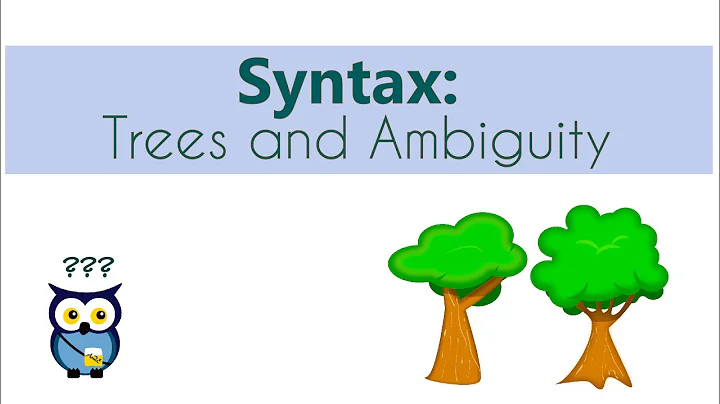Learn English Names with Fun Vocabulary Lesson
Table of Contents:
- Introduction
- Types of Names in English
2.1 First Name
2.2 Middle Name
2.3 Surname
- Full Name
- Initials
- Nickname
- Maiden Name
- Title
- Autograph and Signature
- False Names and Pseudonyms
9.1 False Names
9.2 Pseudonyms
- Usernames, Stage Names, and Screen Names
- Conclusion
Types of Names in English
In today's English lesson, we will explore the different types of names used in the English language. Names can have various meanings and understanding the name system in English-speaking countries can be challenging for non-native speakers. This article aims to provide a comprehensive explanation of different types of names and how they are used in English.
1. First Name
The first name, also known as the given name, is the name that is given to an individual at birth or during a naming ceremony. It is the primary identifier of a person and is often used to address them informally. For example, my first name is Stuart.
2. Middle Name
The middle name is an additional name that is placed between the first name and the surname. While not mandatory, many individuals in English-speaking countries have a middle name. The middle name serves to distinguish a person from others with the same first and last name. For instance, if someone's name is Anthony John Smith, "John" would be their middle name.
3. Surname
The surname, also known as the last name or family name, is inherited and passed down from one generation to another. It indicates a person's family origin or lineage. In most cases, individuals have a single surname, but it is not uncommon for some people to have two or more surnames. Hyphenated surnames, where two surnames are joined by a hyphen, are also quite common. For example, a person could have the surname "Smith-Jones."
4. Full Name
The full name refers to the complete name of an individual, including the first name, middle name (if present), and surname. It is often required when filling out official documents or forms. If a person does not have a middle name, it is not necessary to include it in their full name. For instance, if someone's name is Juan Carlos, their full name would be "Juan Carlos," with no middle name.
5. Initials
Initials are the abbreviated form of a person's name and are typically formed by taking the first letter of each name component (first name, middle name, and last name). For example, if someone's name is Anthony John Smith, their initials would be "AJS." Initials can be used as a concise way to refer to someone or as a signature on certain documents.
6. Nickname
A nickname is an alternate or informal name given to a person, usually by friends, family, or acquaintances. Nicknames are often derived from a person's actual name, physical characteristics, interests, or achievements. They are commonly used in informal settings and can vary greatly depending on individual preference or cultural context. For example, someone named Smith may be called "Smithy" or "Smitty" as a nickname.
7. Maiden Name
A maiden name refers to a woman's surname before she gets married and adopts her husband's surname. In English-speaking countries, it is a common practice for women to take their husband's surname upon marriage. However, some women choose to keep their maiden names for professional or personal reasons. The maiden name can still be used in certain contexts to identify a woman's original family name.
8. Title
Titles such as Mr., Ms., Mrs., Miss, or Master are used as a form of address before a person's name to indicate their gender or marital status. "Mr." is used for men, "Ms." is used for women regardless of their marital status, "Mrs." is used for married women, "Miss" is used for unmarried women, and "Master" is used as a title for young boys. These titles are used in formal or professional settings and are often required when filling out official forms.
9. Autograph and Signature
An autograph is a handwritten signature given by a famous person as a memento or keepsake. It is often requested by fans or collectors. On the other hand, a signature is an individual's written name or symbol that serves as their official mark on legal or important documents. While autographs are given voluntarily, signatures are usually required for authentication or legal purposes.
10. False Names and Pseudonyms
In certain situations, individuals may use false names or pseudonyms instead of their real names. False names are used when someone wants to remain anonymous or conceal their true identity, often to avoid legal consequences. Pseudonyms, also known as pen names or stage names, are alternate names adopted by artists, writers, or performers for professional reasons. They afford individuals the opportunity to separate their personal and professional lives or create a distinct brand identity.
11. Usernames, Stage Names, and Screen Names
With the advent of computers and the internet, usernames have become popular as a means of identification in cyberspace. Users create unique usernames to represent themselves online. Stage names and screen names are pseudonyms or alternate identities adopted by individuals in the entertainment industry, such as actors or musicians. These names provide a level of separation between their personal lives and professional personas.
In conclusion, names play a crucial role in our identification and personal branding. Understanding the various types of names used in English can help non-native speakers navigate social interactions, official documentation, and cultural nuances more effectively. It is important to respect and acknowledge individuals' preferred names and titles to create a sense of inclusivity and cultural sensitivity.
 WHY YOU SHOULD CHOOSE SaasVideoReviews
WHY YOU SHOULD CHOOSE SaasVideoReviews







